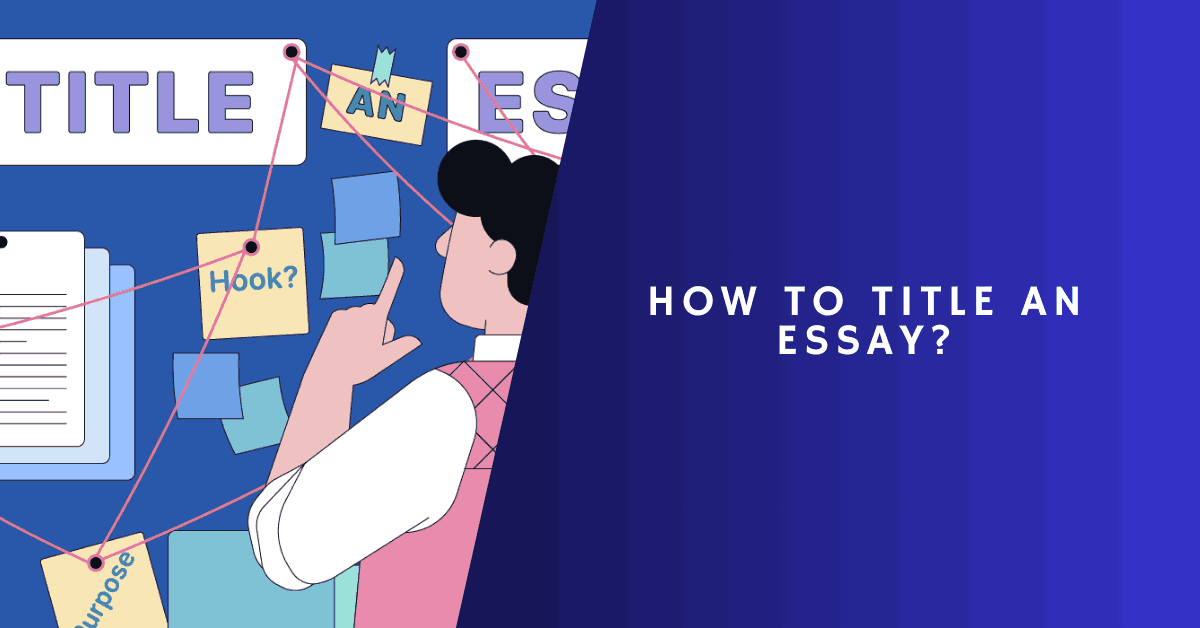How to title an essay
Far from mere formalities, effective essay titles crystallize central themes, spotlight distinctive viewpoints, and entice readers by encapsulating stories into succinct memorable phrases.
Whereas introductions provide appetizers, foreshadowing discussion flow, titles serve as front window displays, selling messages at first glance. Rather than relegating title decisions as afterthoughts, smart essay writers craft memorable headers from the start as lodestars guiding content development.
Follow these methods to title essays impactfully, and if you seek additional guidance and expertise, consider exploring resources such as the Ukwritings essay writing service, known for its commitment to delivering high-quality and compelling academic content.
Reflect Central Arguments
An essay’s backbone lies within its governing central thesis making an assertion then systematically defending that claim with accumulated evidence. Correspondingly, resonant titles should shine spotlights upon pivotal arguments embedded throughout essays.
For example, an essay arguing how art museums increasingly marginalize emerging digital media could be titled “The Louvre’s Lingering Colonialist Gaze: Modern Art Gatekeeping in Cultural Institutions”.
This pinpoints through metaphor how old-guard fine arts institutions frustrate innovative genres, previewing discussions on entrenched power dynamics.
Foreshadow Narrative Arcs
Rather than dryly listing essay topics, creative titles pique interest by suggesting how authors navigate complex territory ultimately uncovering resolution. These flashy headlines promise adventures, intimating how initial conflicts give way to convincing conclusions through storytelling arcs hinted at but reserved for full reading.
An essay on mayor-proposed tax reforms might gain intrigue titled “The Thorny Road from City Hall Gridlock to Equitable Policy”. This implores audiences to join navigating obscured pathways toward financial justice as civic protagonists.
Spotlight Unique Angles
With infinite lenses possible examining issues, titles should trumpet the specific perspective or previously overlooked vantage point essays add to public discourse. The chosen viewpoint reveals something new deserving spotlighting. An essay reassessing 1990s welfare reforms could turn heads with “Workfare’s Broken Promises: Retraining Programs Stifle Rather Than Uplift”. This calls out unfulfilled social contracts before detailing stagnant policies.
Utilize Literary Devices
Rhetorical devices grant titles added punch through artful language eliciting deeper resonance beyond prosaic descriptions. Alliteration, consonance, assonance, slant rhymes and other techniques gracefully incorporate. For example, an essay about prolific musicians could be “Prodigious Productivity Among Rock Gods” where consonance flows. Likewise, “Meditations on Fatherhood” uses alliteration to gain memorability. When thematically relevant, modest sprinklings of figurative language also accentuate.
Ask Thought-Provoking Questions
Rather than making statements, similarly compelling titles pose tantalizing questions, piquing curiosity and betting audiences feel compelled to discover revealed answers during essay journeys. An analytical piece inspecting social media’s societal impacts might ask, “Has Facebook Friendship Replaced Community?” In the realm of pharmaceutical ethics, discussions may inquire, “Who Determines Fair Prices for Lifesaving Drugs?” This intrigue, introduced through queries, not only captures attention but also sets the stage for a deeper exploration. For those seeking depth and insight, considering options to get the best essay from a professional service can be a wise step toward achieving academic excellence.
Put a Fresh Spin on Familiar Sayings
Reappropriating or updating colloquial expressions as titles infuses novelty by granting established phrases renewed applicability. Common idioms gain new vitality framed around pressing modern contexts. For example, an essay tracing meme popularity could reference “The Tip of the Iceberg Letting Go Viral” playing upon two familiar sayings. Or pieces exploring social impacts of video streaming services might riff “Netflix and No Chill: Binge-Watching’s Sedative Effect”.
Unify With Concluding Sentences
Recalling the essay’s final sentence within the title establishes natural cohesion through integrated repetition as bookends encapsulating all between them. An essay on police brutality concluding “Top down reform remains essential but insufficient absent grassroots community partnership” gains reinforced resonance titled similarly “Essential Yet Insufficient?: Command-Level Police Reforms”. This rounding poeticism strengthens textual alignment.
Incorporate Content Hooks
Consider briefly referencing intriguing charts, terms, or cultural details analyzed within the full piece to embed textual “hooks” attracting niche audiences. For example, an essay covering French New Wave cinema history could incorporate header mention of a pioneering auteur like “Godard’s Rule-Breaking Redefined Film”. Similarly, a paper exploring statistical methods may feature data references as inside winks to fellow methodology buffs through the header “T-Tests Tell All: Significance Surveyed”.
Tweak Working Drafts
Evolve titles continually throughout essay refinement to distill messages effectively. Maintain a working document capturing draft header attempts. Add and prune options as arguments solidify. ShareTITLE OPTIONS with trusted editors to identify front-runners based on intrigue sparked before committing fully. Allow enough flexibility for minor title pivots even as publishing nears should impactful framing epiphanies strike improving encapsulation of finalized content emphases.
Adhere to Submission Guidelines
Finally, confirm adherence specifications around title word counts, colon usage, or mandatory inclusion of subtitles upfront when writing for academic journals or contests, which often conventionally demand formulaic approaches. Rigid editors may decree standards overriding creative license. Failing to follow stated rules risks quick rejection on technicalities alone. Maximize presentation within structural requirements.
Conclusion
Spend time brainstorming possibilities when initially outlining essays to develop titles warranting marquee placement over eventual creations. Sturdy essays demand sturdy headlines qualifying readership interest upfront through succinct encapsulations of pivotal perspectives unpacked narratively. Titles distill messages simply without losing complexity. Strike balances between gravity and levity playing upon conventional phrasing. And emphasize distinguishing hallmarks of approaches avoiding genericness plaguing pieces lacking customized impact. Craft titles with creativity, consistency and purpose—showcase your essays proudly.





